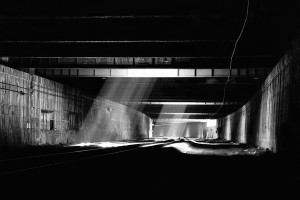
In this “Tapestry of Space: Domestic Architecture and Underground Communities in Margaret Morton’s Photography of a Forgotten New York” discussed by Irina Nersessova, she discusses how the architectural structures and homelessness have become an intertwined haven for those who are classified as homeless or the less fortunate. In this article, it is evident that homelessness is a significant problem in cities around the world, but the one that Morton focuses on through photographs is New York City. Morton tries her best to capture pictures of what it looks and feels like to be homeless from a homeless person’s perspective. One great description of a place that a homeless calls a home throughout this article is the underground tunnel in New York City, which is discussed through older photographs. An excellent point that Morton makes about why the homeless choose to live in the tunnels is that the homeless dwell in underground tunnels in New York to escape the bombard of the media and their interpretations on their situations.
The misunderstanding of homelessness is stressed throughout this text. The areas of the city that tourists would consider remote areas of wasted space would never understand the physiological connection that those who live there have than those who don’t. The residents who live in the tunnel consider the darkness to be safe as quoted by one the residents who Nersessova interviewed, “The absolute darkness of the tunnel prevents danger from entering it, which explains how it is possible to have the highest feeling of safety in a place that is perceived as most dangerous.” Although the middle and upper class would never do so due to their fear of darkness or a dim lit area, which is why it creates a safe haven for those who live there.
The residents who have made the choice to live underground demonstrates that the social problems above ground have forced them into an alternate sphere according to Nersessova. The tunnel is seen as a place that accepts its residents as they are, despite the rejection and failure they have experienced from the society above. A majority of the homeless who dwell in the tunnel are some of the most hardworking individuals. Although the middle-upper class society devalues the homeless as people, who are lazy and always looking for handouts. Throughout the rest of this section, Nersessova goes on to discuss how the public space has intensified over the years due to New York trying to maintain its public attractions and how the meaning of domestic architecture is viewed differently by the homelessness. The goal has been to turn urban areas into money-making attractions, as stated by Nersessova the “goal has been to push the poor out of sight.”
In the last section of the article, Nersessova goes on to discuss how Morton retells the stories of the inhabitants of domestic architecture. A great example that helps understand where Morton was getting is her interview with Pepe, “the self-described watchman of the New York neighborhood of Bushville, who made his money in typesetting and in electronics.” The photographs showed the progression of his house as it became a more complicated piece of domestic architecture until it was demolished by the city. The discarded materials represented a sense of identity by they used these to created their homes and had something to call theirs, and this sense of identity is taken away when these homes are demolished or blocked off, and the only place you have to flee to is the underground tunnel where you feel safe and secure. In conclusion, Nersessova shows the connection between the minds of the citizens and architecture. This article shows that discrimination and segregation are still alive in this era, despite it being a blur in some people’s eyes.